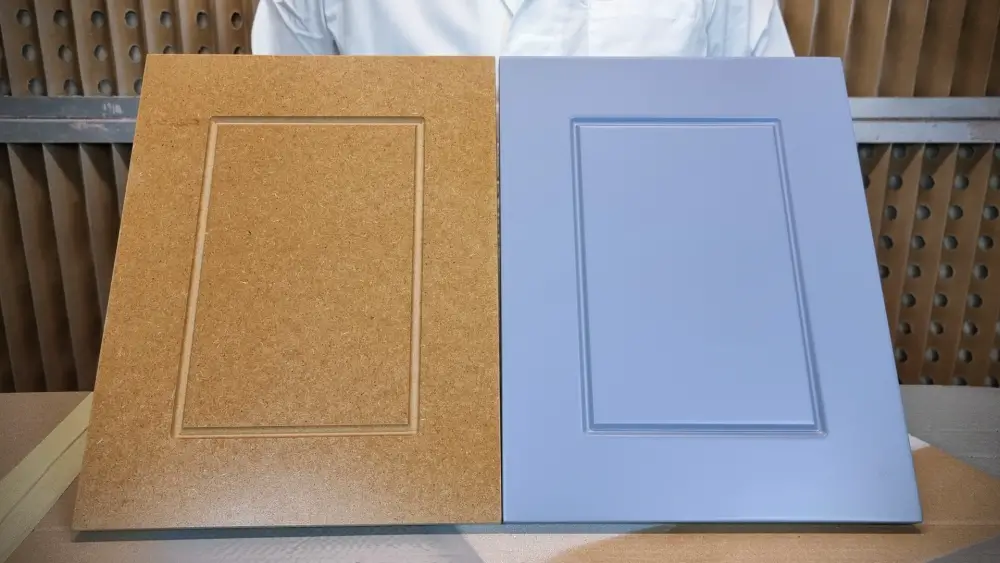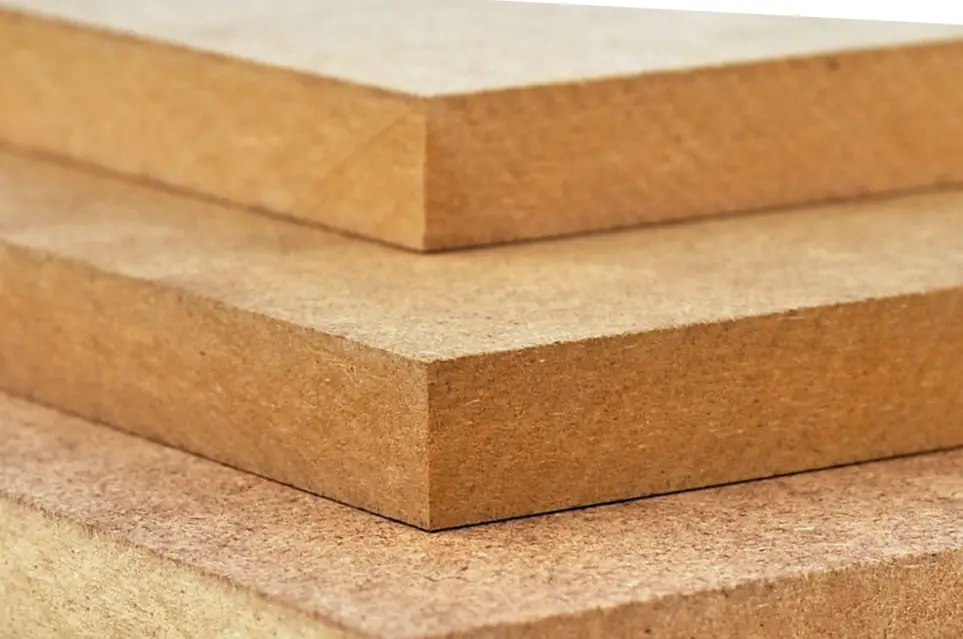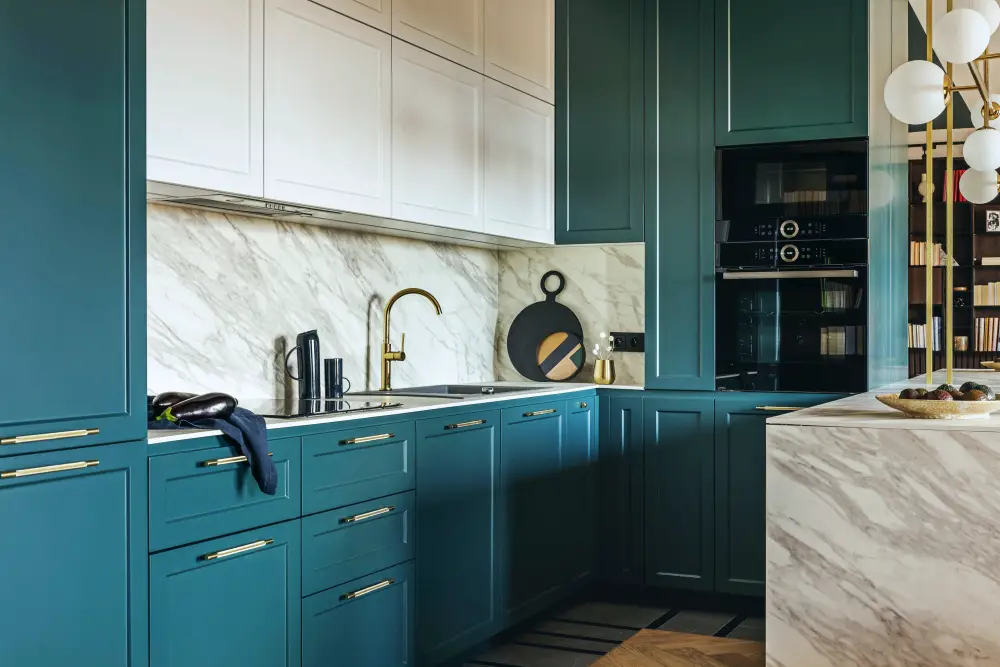In the world of furniture and interior design, choosing the right material is crucial, especially in spaces with special moisture conditions such as the kitchen and bathroom. One of the most popular materials used in these spaces is MDF (Medium Density Fiberboard), which, when properly finished, becomes not only aesthetically pleasing, but also extremely resistant to harsh conditions such as high humidity or steam. This article aims to explore in detail the finishing of MDF with polyurethane varnishes and paints, providing a step-by-step guide to a durable, high-quality finish. At the end of the article you will find a video with the steps needed to finish MDF correctly.

What is MDF?
MDF is a composite material made by heating and pressing wood fibres mixed with resins and waxes. It is known for its smooth surface, free of knots and imperfections, making it ideal for painting and varnishing. It can be foliatedThe wood is available in a wide range of finishes, from matt to glossy. More about MDF and its comparison with other materials, such as chipboard or natural wood, can be found on WoodIndustry.News.
Unlike chipboard, MDF panels can be milled due to their homogeneous composition and are stronger with a denser structure. After painting or veneering, the panels can be used as doors for furniture, with a similar appearance to wood.

Areas of Use
MDF finished with polyurethane paints is ideal for kitchens, bathrooms and other wet environments due to its water and stain resistance. It is a versatile material, suitable for both custom furniture and interior decorative elements. Detailed article on the use of MDF in kitchens can be found at here.
The ease with which it is processed, its homogeneity and dimensional stability also make it suitable for producing decorative panels used to delimit spaces or to mask areas or appliances (radiator mask).

Coating Methods and Stages of Painting MDF
1. Surface Preparation
The first step in finishing MDF is careful surface preparation, which includes sanding. This ensures that any uneven texture is removed and prepares the material for the application of insulation. It is essential to pay particular attention to milled areas, edges and edges, as these can absorb more finishing material and become rough if not sanded properly. How to choose the abrasive materials needed for sanding learn from this article.
After sanding, the resulting dust is removed by vacuuming or blowing with air and wiping with a dry cloth.
2. Application of the Isolator
The insulator is crucial for blocking tannins and other substances that can migrate from the MDF into the top finish layers, affecting adhesion and appearance. A coat of insulator is applied, followed by light sanding to ensure a smooth surface ready for the primer coat.
Insulators are lower viscosity materials than primer and varnish. The purpose is to penetrate the MDF, not to film it. Once in, it hardens and acts as a barrier to any substances that would otherwise tend to come to the surface.
3. The background
The primer serves to create a homogeneous surface and improve the adhesion of subsequent layers. Applying a quality primer and sanding it is essential to achieve a uniform and durable finish. For more details on how to achieve a perfect gloss on MDF, see this article.
Applying primer is a very important step. It is the primer that ensures the required film thickness with a reduced number of coats, quality sanding and good film adhesion.
4. Paint
The last coat is polyurethane paint, which can be water-based or solvent-based. The choice between these two types depends on individual preferences and application conditions. It is important to choose high-quality paints that offer good resistance to wear, scratches and chemicals.
The paint can be matt or glossy, white or in various hard or pastel colours. As it is the last coat, the paint does not sand off, so the working environment must be as dust-free as possible and the application correct so that no dust is left behind. film defects such as orange peel or gassing. In the case of glossy paints, which are more sensitive, the mirror gloss look can be achieved by polishing.
Tips for a Quality Finish
- Avoiding high consumption of finishing materials: Excessive use of materials is not only costly but can also affect the quality of the finish. Further details are available here.
- Controlling the working environment: Temperature and humidity play a crucial role in the quality of the finish. Make sure the working environment is well ventilated and the temperature is optimal. Also make sure that the areas where finishing materials are applied and dried are as dust-free as possible.
- Using the right equipment: The quality of the application equipment, such as the spray gun, directly influences the finish. It is important to use the right nozzles and equipment for the type of paint and finish desired. Also important are air pressure and water and oil filters for the compressed air coming from the compressor.
Finally, finishing, painting MDF with lacquers and polyurethane paints is an excellent way to achieve durable and aesthetically pleasing furniture for kitchens, bathrooms and other spaces exposed to moisture and steam. By following the correct preparation and application steps, outstanding results can be achieved that last for years. Watch the following video to see step-by-step MDF painting technology and many other details needed to achieve a quality result.






























Add comment